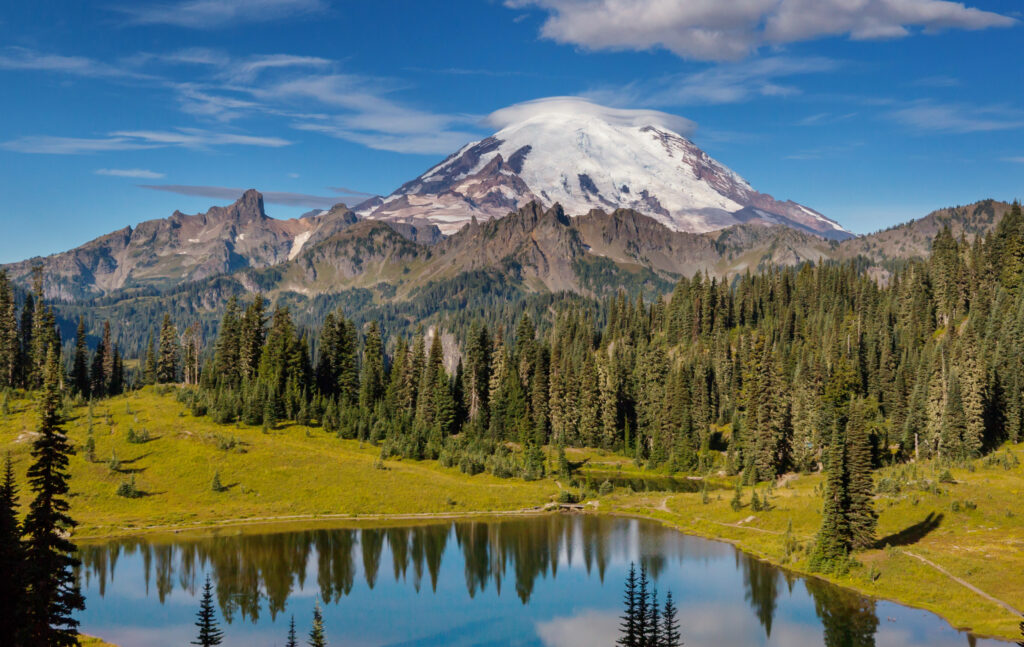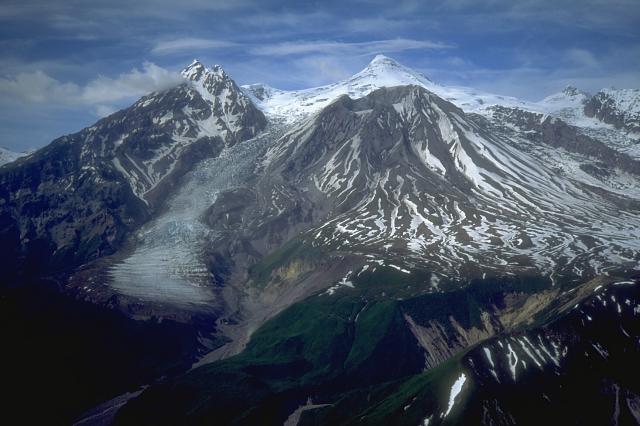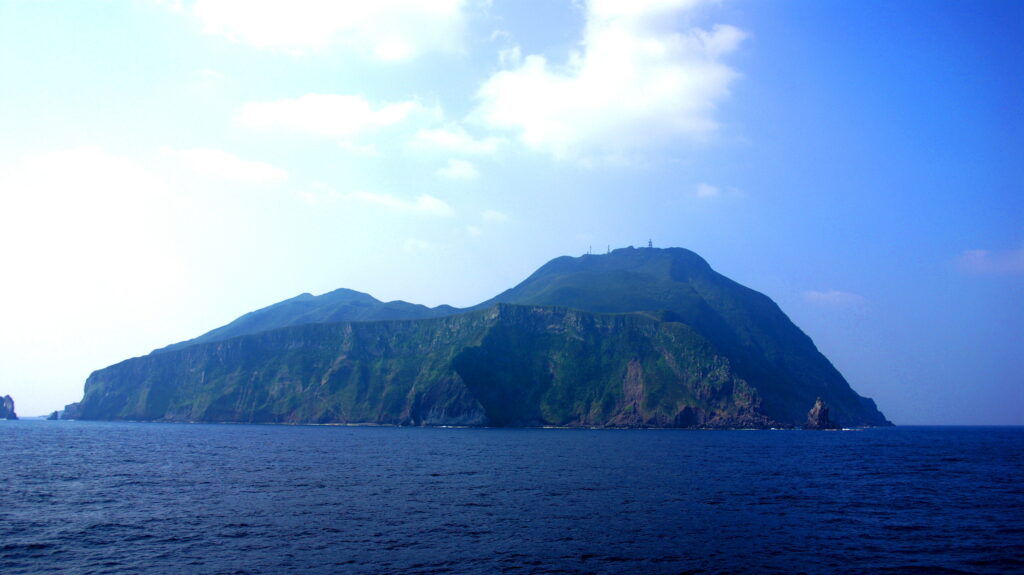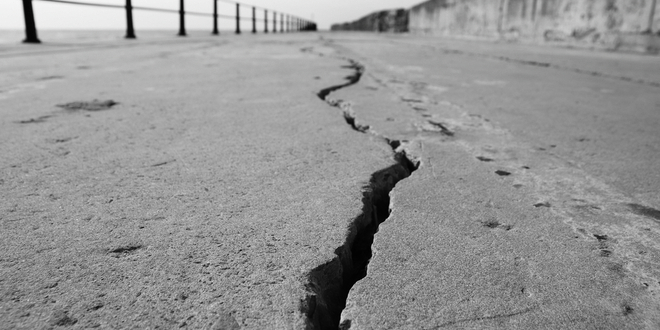From the depths of New Jersey to the coasts of Kamchatka, the Earth has been rumbling with unusual intensity in recent weeks. Seismic activity across multiple continents has scientists, emergency agencies, and residents on high alert, as earthquakes and volcanic eruptions rock previously quiet zones and reignite long-dormant giants.
Tremors in the Tri-State: New Jersey, New York Shaken
Late Saturday night, a magnitude 3.0 earthquake jolted residents in Hasbrouck Heights, New Jersey, with tremors felt as far as Upper Manhattan, Riverdale, Staten Island, and parts of the Bronx. The quake struck at 10:18 p.m. at a depth of six miles, according to the United States Geological Survey (USGS). No injuries or significant damage were reported, but startled residents described shaking that lasted up to ten seconds.
The quake follows a series of six microearthquakes — ranging from magnitude 0.7 to 2.0 — that rattled Morris County, NJ, just last week in a 17-hour swarm. This is not the first seismic surprise for New Yorkers: a magnitude 4.8 quake in April, centered near Lebanon, NJ, sent stronger shockwaves through the city, serving as a wake-up call for the region.
A Monster Quake in Russia’s Far East
On the other side of the globe, one of the most powerful earthquakes in recent memory struck Russia’s Kamchatka Peninsula last Wednesday. The magnitude 8.8 earthquake generated small tsunami waves in Japan and Alaska and triggered warnings throughout the Pacific, from Hawaii to New Zealand. The U.S. Geological Survey said the quake may tie the 2010 Chile earthquake as the sixth largest on record, though further data is still being analyzed.
This massive tremor appears to have set off a chain reaction. Just days later, the Krasheninnikov Volcano erupted for the first time in 600 years, sending ash plumes over 6,000 meters into the sky and prompting Russia’s emergency services to issue an orange aviation alert due to the heightened risk to aircraft. The eruption was followed by activity at Klyuchevskoy, the most active volcano in the Kamchatka region, and another powerful 7.0 earthquake that renewed tsunami concerns.
A magnitude 3.0 earthquake struck the Greater New York Area, New Jersey, on August 3, 2025, near Manhattan. #sismo #NJ #NYC pic.twitter.com/n6fUzQsc60
— GeoTechWar (@geotechwar) August 3, 2025
Tsunamis in the End-of-Days
Rabbi Yekutiel Fish, author of the Hebrew Torah blog Sod HaChashmal, emphasized that forces of nature, such as earthquakes and volcanoes, are manifestations of God’s judgement, denoted in the Bible by His name ‘elohim.’ The rabbi noted that the seismic aspect of God’s influence in the world was explicitly described in Psalms, which describes earthquake-generated tsunamis as an end-of-days phenomenon.
Therefore we are not afraid though the earth reels, though mountains topple into the sea. Its waters rage and foam; in its swell mountains quake. Selah. Psalms 46:3-4
The chapter goes on to assure that wars will disappear from the earth and that the Redemption will arrive after the period of natural upheaval.
“The entire world will be judged before the Moshiach (Messiah),” Rabbi Fish told Israel365 News. “Nature will change, be less normal, because God will be guiding it in a more direct manner.”
“This will be especially true during the War of Gog and Magog,” he said. “The war will be unique in that it won’t be simply a war between countries. God will play a major role via nature, through natural disasters.”
Rabbi Fish emphasized that it is a mistake for men to think they can control nature.
“The only thing we can do is pray and do tshuva (repent),” Rabbi Fish said. “But these are the greatest acts a man can do. In our age, when the messiah is imminent, this can save the world.”
“The verse in Psalms is clearly referring to tsunamis, which will increase in the days preceding the Messiah,” Rabbi Fish said. But we also see that earthquakes will increase around the world.”
Rabbi Fish cited an explanation on the verse from Rabbi David Altschuler, an 18th-century Galician rabbi whose Bible commentary is known as the Metsudat David.
“The Metsudat David explains that in the war of Gog and Magog, half of the people who die will be killed in the war that will be fought between the nations,” he noted.
“The other half of the casualties will be caused by the natural disasters that are described as occurring at the end of days. Prominent among these disasters will be unprecedented earthquakes and volcanoes.”
Mount Rainier’s Record-Breaking Earthquake Swarm
Back in the United States, scientists are keeping a close watch on Mount Rainier — the Pacific Northwest’s most iconic volcano and one of North America’s most dangerous. On July 8, over 330 small earthquakes were recorded at Rainier in just 48 hours, marking the largest swarm since 2009. The quakes, reaching up to magnitude 1.7, were located 1.2 to 3.7 miles below the summit.
While no eruption is imminent, the USGS noted the increase in seismicity is a clear signal of shifting activity deep within the mountain. Rainier’s past eruptions have triggered devastating lahars (volcanic mudflows), and with over 80,000 people living in potential flow zones, officials are taking no chances.

Earthquakes in the End-of-Days
The prophets explicitly mention earthquakes as playing a role in the end of days, preparing the world by burning away impurities, as a crucible is used in metallurgy to purify metal.
“And I will bring the third part through the fire and will refine them as silver is refined and will try them as gold is tried; they shall call on My name and I will answer them; I will say: ‘It is My people’ and they shall say: ‘Hashem is my God.’” Zechariah 13:9
The Prophet Ezekiel specifically described earthquakes as preceding the War of Gog and Magog:
Mountains shall be overthrown, cliffs shall topple, and every wall shall crumble to the ground. Ezekiel 38:20
Rabbi Pinchas Winston, an end-of-day expert, believes that as times go on, such events indicating divine intervention in mundane events will become more prevalent.
“In the later stages of the geula (redemption) the mixture of miracle and nature will increase to the point where it will become so clear it will be undeniable,” Rabbi Winston said. “You can’t conclusively say anything is hashgacha pratit (divine intervention). But the people who are prepared to look at the big picture will be able to connect the dots in a way that makes more sense than trying to explain everything in strictly natural terms.”
Volcanic Activity Awakening Across Alaska
Alaska is seeing its seismic surge. Several long-dormant volcanoes — including Iliamna, Great Sitkin, and Mount Spurr — are showing signs of unrest. Mount Spurr, in particular, has prompted USGS to raise its alert level, warning an eruption may be weeks away. Underwater, the Axial Seamount off Oregon’s coast is also rumbling and could erupt soon, scientists warn.
In July, a 7.3 magnitude earthquake off southern Alaska’s coast triggered tsunami warnings and sent residents scrambling, though no primary wave arrived. The quake underscored the precarious volatility of the Pacific “Ring of Fire.”

Earthquakes: Cleaning the World
Rabbi Nir Ben Artzi, an Israeli mystic with a substantial following, has been warning of an increase in volcanic eruptions as part of the end-of-days process preceding the Messiah, who the rabbi maintains is present but waiting to reveal himself.
“The Creator is purifying the world from the filth of the snake to prepare the way for the Messiah to be revealed in the world,” Rabbi Ben Artzi said in his weekly sermon. “The Redemption will come mercifully, so our Father in Heaven uses nature against us: through storms, fires, earthquakes, and volcanoes…Slowly, the Holy One, Blessed be He, is destroying all the evil in the world while at the same time preparing the light of the Messiah. The world is experiencing destruction and rebirth at the same time.
Rabbi Yosef Berger of King David’s Tomb on Mount Zion noted that natural phenomena always accompany redemption.
“Most of the time, nature appears to act according to a set of rules,” Rabbi Berger told Israel365 News. “People who do not see God in the world mistakenly believe that this is how nature must act and will always act. They believe that through these laws of nature, they have made up that they rule over God’s creation.”
Rabbi Berger noted the blessing that a Jew says after witnessing an awe-inspiring act of nature:
Blessed are You, Lord our God, King of the universe, whose power and might fill the world.
“Just as we saw in Egypt, when Hashem (God, literally ‘the name’) is about to act, to bring the Redemption, he takes the reins of nature and the rules that have seemed unchanging and unchangeable no longer apply,” Rabbi Berger said. He pointed to a chapter in Psalms, which he asserted describes this process in the end-of-days and seems to describe the potential for destruction in the Pacific Ring of Fire.
Therefore, we are not afraid though the earth reels, though mountains topple into the sea—its waters rage and foam; in its swell, mountains quake. Selah. Psalms 46:3-4
The chapter goes on to assure that wars will disappear from the earth and that the Redemption will arrive after the period of natural upheaval.
The British Isles Stir
Even typically mild seismic zones are experiencing upticks. A 3.1 magnitude quake hit Inchlaggan in the Scottish Highlands on Friday, with tremors felt across a 24-kilometer radius. The British Geological Survey (BGS) says over 100 quakes have already struck the UK in 2025, with at least nine in a single week in July.
The UK experiences around 300 quakes annually, but experts warn the region is riddled with small fault lines capable of occasional surprises.
Japan’s Tokara Islands: A Relentless Swarm
In Japan’s remote southern Tokara Islands, over 1,300 earthquakes have been recorded in just two weeks, prompting the evacuation of dozens. While no significant damage has occurred, the Japan Meteorological Agency warned that tremors as strong as a “lower 6” on the national intensity scale could continue. Residents are on edge, bracing for possible larger shocks.

Quiet Danger in the U.S. Heartland
Far from the dramatic coastlines, the New Madrid Seismic Zone — nestled in America’s Midwest — has been quietly ticking. Since 1974, thousands of small to moderate earthquakes have been recorded here, with scientists warning the area remains seismically active and overdue for a larger rupture. The zone stretches across parts of Missouri, Arkansas, Tennessee, and Kentucky, where infrastructure remains largely unprepared for a significant event.
A Global Pattern?
This year also saw a rare magnitude 8.0+ earthquake in Ethiopia — the first such quake globally in nearly four years — adding to the chorus of geological unrest.
While scientists caution against reading too much into short-term upticks, the flurry of activity across such a wide range of seismic zones is notable. Many of these events occurred along the volatile Ring of Fire. Still, others — like in New Jersey, Scotland, and the central U.S. — highlight how even traditionally quiet regions are not immune to the Earth’s restless tectonic forces.
With volcanoes reawakening, deep faults grinding, and residents across continents feeling the shake, the past few weeks have served as a stark reminder: the ground beneath our feet is anything but still.
All Eyes on Yellowstone
A groundbreaking study published in Science Advances on July 18, 2025, by researchers from Western University, Universidad Industrial de Santander, and the USGS applied machine learning to reanalyze 15 years of seismic data from the Yellowstone Caldera. By leveraging station‑specific AI models and a detailed 3D velocity model of the region, the team retroactively detected and assigned magnitudes to 86,276 earthquakes from 2008 to 2022—approximately ten times more than previously documented.
The expanded earthquake catalog revealed that more than half of these events occurred as swarms—clusters of small, interlinked tremors that unfold over short timespans and in confined areas, rather than as traditional mainshock‑aftershock sequences. These swarms are associated with fluid movement through “immature” and rough fault structures beneath the caldera, distinct from smoother faults in more developed seismic regions such as southern California.
"Bubbling hot" in Yellowstone means you're standing on one of the world’s largest supervolcanoes. Beneath you lies a magma system over 48 km wide vast enough in volume to rival several Mount Everests.pic.twitter.com/louKCLomiH
— Massimo (@Rainmaker1973) July 21, 2025
Prior to this AI‑based analysis, detecting small earthquakes relied heavily on manual inspection—slow, costly, and often missing subtle signals. The study underscores how machine learning transforms seismic monitoring by processing vast historical waveform datasets at scale, enabling scientists to uncover previously hidden microseismicity and revisit archives worldwide with renewed insight.
Equipped with this dramatically enhanced seismic dataset, researchers can better characterize the dynamics of Yellowstone’s underground hydrothermal and volcanic systems. The enriched catalog enables more robust statistical analysis of swarm behavior, improving hazard assessments, informing public safety protocols, and guiding more informed geothermal energy development strategies in high‑heat zones.
Seismic activity at Yellowstone is a major concern. The Yellowstone Caldera is listed as the most dangerous supervolcano in existence and is the most monitored volcano in the world. It has erupted thrice over the last 2 million years, most recently about 70,000 years ago. Yellowstone has produced three cataclysmic eruptions that scientists know of: at 2.08, 1.3, and 0.631 million years ago.
Experts claim that in the event of a Yellowstone eruption, an estimated 87,000 people would be killed immediately, and two-thirds of the United States would become uninhabitable. Moreover, a month-long super-eruption could affect the global climate for several years.
The biggest danger from an eruption is not the lava but the ash. The Yellowstone eruption two million years ago produced 2,500 times as much ash as the 1980 Mount St. Helens eruption. Ash is caustic when inhaled, and volcanic eruptions can spew the ash high into the atmosphere. The pileup of ash on rooftops has resulted in building collapses. A Yellowstone supereruption would disrupt electronics and endanger human health in Montana, Idaho, Wyoming, and affect other parts of the country. Moreover, a month-long supereruption could affect the global climate for several years.
In comparison, relatively minor eruptions at Eyjafjallajökull, Iceland, in 2010, led to 20 European countries shutting down their commercial air traffic for one week, affecting more than 20 million travellers.
Major volcanic eruptions that spew ash into the atmosphere, obscuring the sun, can lead to a volcanic winter in which global temperatures drop. The phenomenon is not infrequent, occurring approximately once each century. The most recent took place in 1991 after the explosion of Mount Pinatubo in the Philippines, cooling global temperatures for about three years. A more significant drop in temperatures could lead to a global crisis in food production.
The researchers conclude that six super-eruptions took place during the Miocene geological era, a period spanning 23 to 5.3 million years ago, at an average of once every 500,000 years.
It should be noted that the last major eruption at Yellowstone was 630,000 years ago, which may lead some to think that the supervolcano is overdue.




